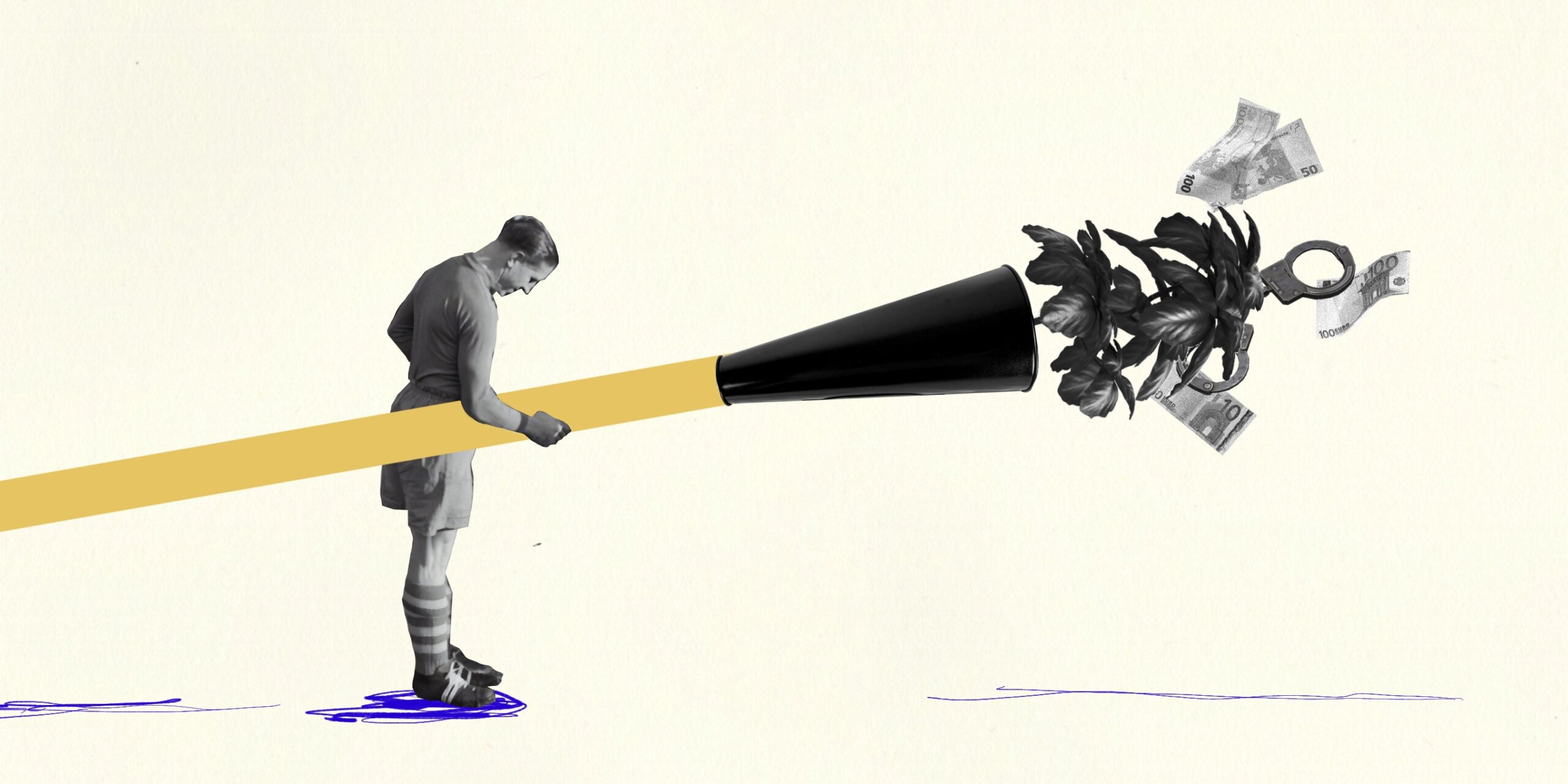
Illustration by Armine Shahbazyan.
Currently, the EU is facing multiple major crises simultaneously—military, economic and, of course, energy. The Russian invasion of Ukraine has shaken the European continent, and there is one non-conventional weapon—energy supply—that is playing a big role.
Russia provides around 40% of Europe’s natural gas supply, 25% of its oil, and 45% of its coal. In 2021, Europe imported an average of 380 million cubic meters of natural gas per day from Russia, totaling 140 billion cubic meters. In addition, a further 15 billion cubic meters of liquefied natural gas (LNG) is also imported from Russia. At current energy prices, the EU alone provides around $700 million per day to the Russian economy for crude oil and refined products and another $400 million per day for piped natural gas. Thus, the two entities are heavily interdependent. The EU needs these carbon resources to power its economy, while Russia needs the revenue to support its own.
While the U.S. banned oil imports from Russia as part of its sanctions package, the EU did not follow suit. Currently, the EU is unable to strike at Russia’s Achilles’ heel; however, it is preparing the ground for the future. A reshaped energy policy can take a decade or more to implement, but the process has started: the EU has declared that it will be taking steps to reduce its dependence on Russian hydrocarbons.
The European Commission undertook its first steps in March 2022, immediately after Russia’s invasion of Ukraine. The new proposals were envisaged in the REPowerEU plan, which prepares the ground to reduce the EU’s dependence on Russian gas by two thirds by the end of 2022. The strategic goal is to ensure independence from all categories of Russian fossil fuels by the end of 2030.
Though specific details are scarce, the plan outlines the emergency measures that the EU will take, such as replenishing underground gas storage across the EU by at least 90% by the end of September 2022. EU members will set a guideline for regulating prices and redistributing revenues from increased energy sector profits back to the consumers. Companies that have been severely affected by higher energy prices are slated to receive some state support.
Over the long-term, the EU intends to diversify its gas suppliers, accelerate the adoption of renewables and increase overall energy efficiency. Norway, Algeria and Azerbaijan have been identified as partners that can increase gas deliveries, though Azerbaijan’s resource base is not large enough to meaningfully offset Russian deliveries. Either way, Azerbaijani gas supply to Europe will have implications for Armenia and especially Artsakh. When Azerbaijan launched an unprovoked war against Artsakh in 2020, also striking across the state border with Armenia, the response from the EU was totally different. There were no discussions about punishing Azerbaijan for launching a war. In fact, few European countries even acknowledged that Azerbaijan was the side that had started the fighting, feeding Azerbaijan’s disinformation campaign that blamed the victim. Now the EU is seen among many in Armenia as favoring an authoritarian state to secure hydrocarbon imports, and pressuring Armenia to make further concessions. Especially now as the EU is trying to take the initiative on the Armenia-Azerbaijan reconciliation process, Azerbaijan will have extra leverage over the EU to pressure Armenia.
Commission President Ursula von der Leyen said, “We must become independent from Russian oil, coal and gas. We simply cannot rely on a supplier who explicitly threatens us. We need to act now to mitigate the impact of rising energy prices, diversify our gas supply for next winter and accelerate the clean energy transition. The quicker we switch to renewables and hydrogen, combined with more energy efficiency, the quicker we will be truly independent and master our energy system.”
Regarding energy efficiency, the EU calls on the member states to fully implement the Fit for 55 proposals launched in July 2021, according to which the EU should reduce carbon emissions by 55% by 2030, and achieve net-zero emissions by 2050. The interconnected proposals cover policies on climate, land use, energy, transport and taxation, to bring them into line with the targets agreed to in the European Climate Law. The Commission is advocating for more solar and wind power and aims to install 10 million heat pumps in the next five years.
Further details regarding the REPowerEU plan will be shared in May, when the Commission will present a more detailed plan of action. After the adoption of REPowerEU, the head of the European states held an informal meeting in Versailles on March 10-11, 2022, and adopted a declaration. It reads:
Confronted with growing instability, strategic competition and security threats, we decided to take more responsibility for our security and take further decisive steps toward building our European sovereignty, reducing our dependencies, and designing a new growth and investment model for 2030.
In this respect, we addressed today three key dimensions:
- a) Bolstering our defense capabilities;
- b) Reducing our energy dependencies; and
- c) Building a more robust economic base
In terms of reducing energy dependence, the steps initially mentioned in the REPowerEU document are explained more broadly. The cornerstone of the declaration is the transition to a cleaner economy, speeding up the development of renewables and the production of their key components, as well as streamlining authorization procedures to accelerate energy projects. One of the important points is “enhancing connectivity with our immediate neighborhood”, which of course includes the Southern Neighborhood’s hydrocarbon-rich countries and the Eastern Partnership, with its unstable geopolitical situation. The Ukraine War became the trigger to finally take decisive steps toward the implementation of the European Green Deal and the transition to a cleaner, lower-waste economy.
The European Green Deal was adopted in 2019 by the EU, which aspires to become climate-neutral by 2050, i.e. no net new greenhouse gases are to be emitted after that date. By introducing a circular economy that reduces waste, an intermediate target of reducing emissions to 50% of 1990 levels by 2030 has been agreed to. The biggest transformation will come in the energy sector. Over 75% of the EU’s greenhouse gas emissions come from the production and consumption of energy. The effort to decarbonize the sector will include the renovation of buildings, where 40% of energy is consumed. Of course, to achieve such a long-term goal, implementation steps need to start now.
Now more than ever, there is an urgency to ensure the implementation of the European Green Deal, by keeping a better balance between more social investment-oriented policies and more traditional social protection- and social inclusion-oriented policies. Macroeconomic and development policies need to fit hand in glove to prevent social unrest. Just transition mechanisms need to be used to ensure that the emerging policies combine environmental requirements and social ambitions. To make the transition smoother and to avoid social unrest and opposition by the member states, it will be necessary to increase the endowment of the Just Transition Fund to gain the support of states whose economy is dependent on fossil fuels. The job market will be totally transformed, creating a need for training new workers and to anticipate required skills well in advance, due to the time required for education. Another important factor is to set benchmarks and envisage methodologies at the EU level for companies and investors.
There is a lot of work to be done. It is now or never for the EU if it truly wishes to escape its dependence on Russian energy and be able to pursue an unrestrained foreign policy. After the Ukraine War, the full implementation of the Green Deal is no longer just a matter of environmental policy, it will impact who gets to call the shots in the years ahead.
Politics
Part I: What May Happen to Armenians in Nagorno-Karabakh
In Part 1 of a three-part series, Sossi Tatikyan analyzes the uncertainties and possible scenarios for Nagorno-Karabakh if Armenia’s leadership goes ahead with the recognition of Azerbaijan’s territorial integrity.
Read morePart II: What May Happen to Armenians in Nagorno-Karabakh
In order to understand what may happen to Armenians in Nagorno-Karabakh if appropriate international guarantees for security and human rights are not put in place for them, Sossi Tatikyan presents the evolution of several comparable conflicts.
Read moreCreative Tech
Big Talk, Fast Growth But Still Early Stage: Armenia’s Tech Industry
Two decades ago, the IT sector was declared a priority for Armenia. With natural talent, innovation and state privileges, the sector seems to be growing relatively fast. Yet, its influence on the country’s economy remains relatively low.
Read moreRaw & Unfiltered
Armenian Attitudes Toward Science and the Soviet Legacy
Armenia’s scientific sector was decimated in the 1990s. Many in the country have been talking about its former glory for 30 years with pride, anger and longing. What were the priorities of Armenian science during the Soviet years and what is its potential today?
Read moreArmenian Attitudes Toward Work and the Soviet Legacy
The popular opinion about the hardworking nature of Armenians changed after independence, when Armenia was left to become the master of its own destiny. Mikayel Yalanuzyan examines the Armenian work ethic.
Read more





